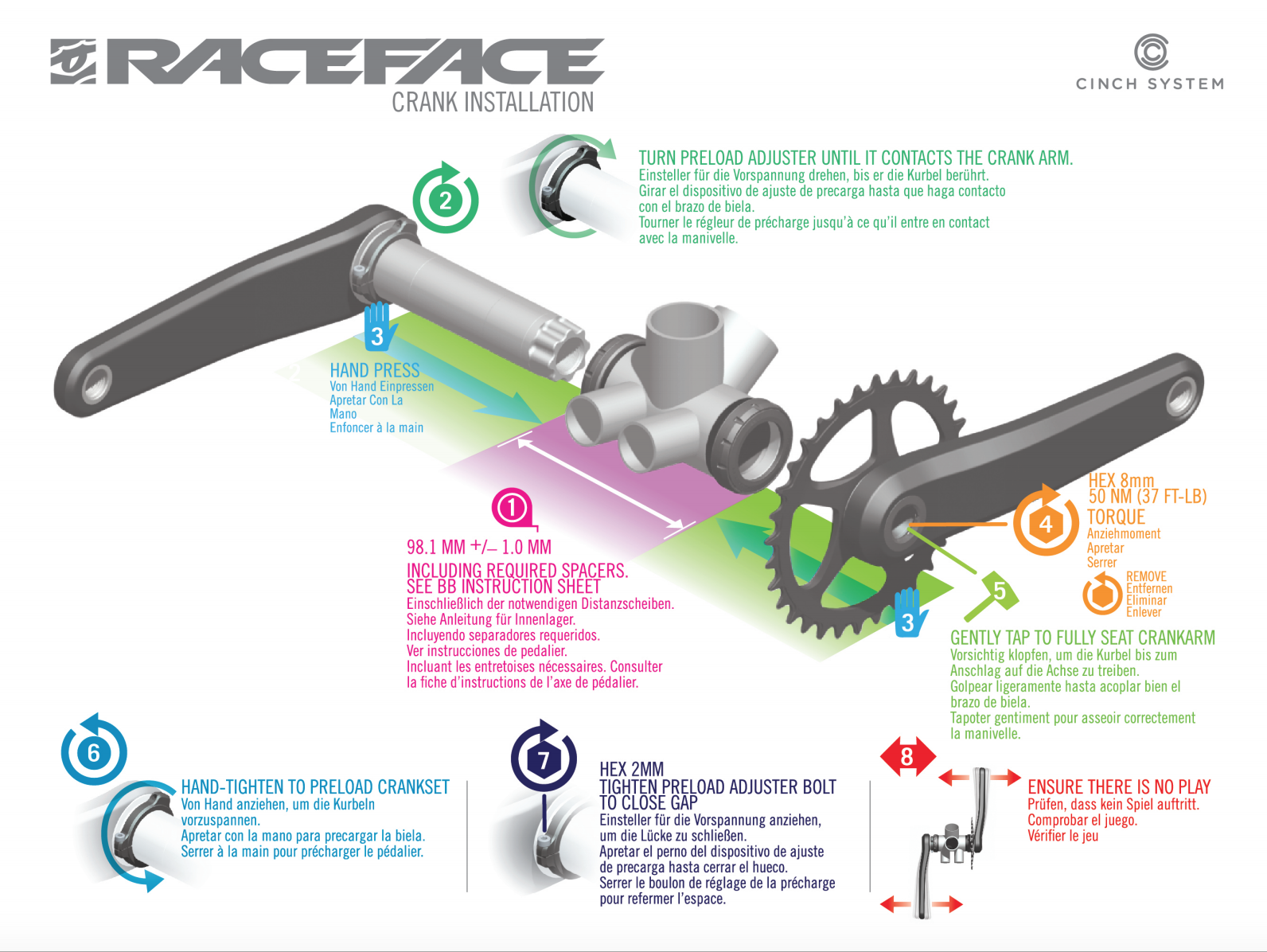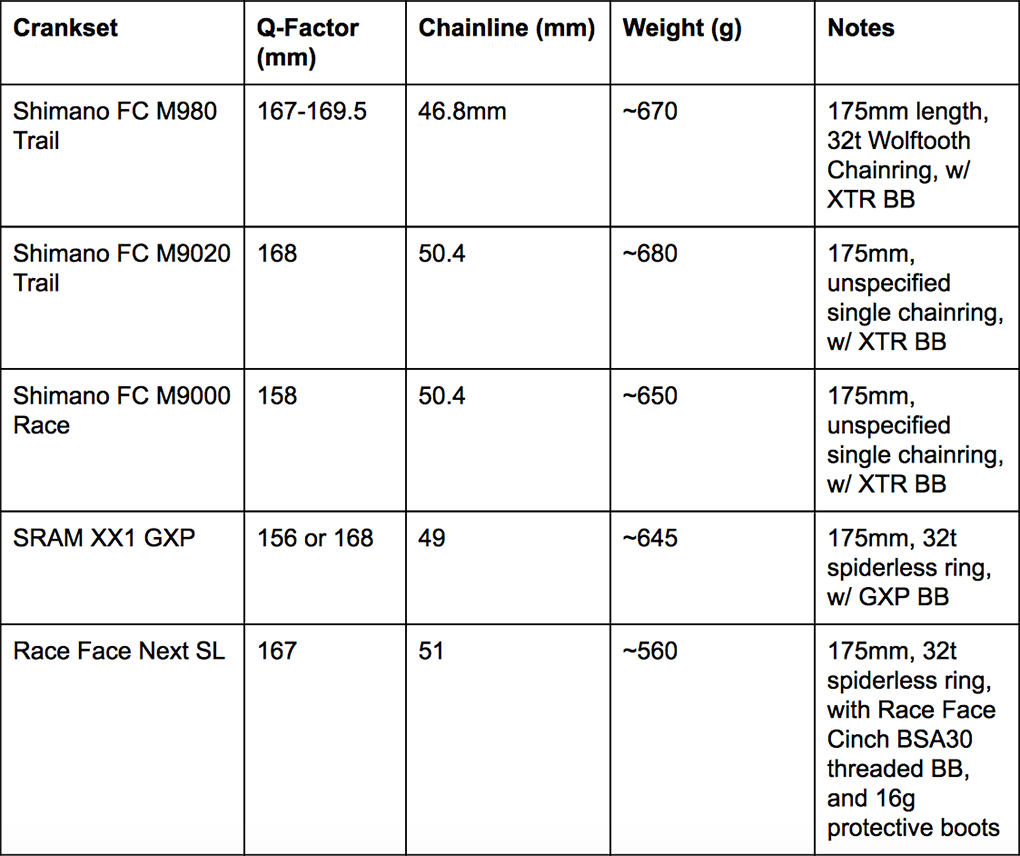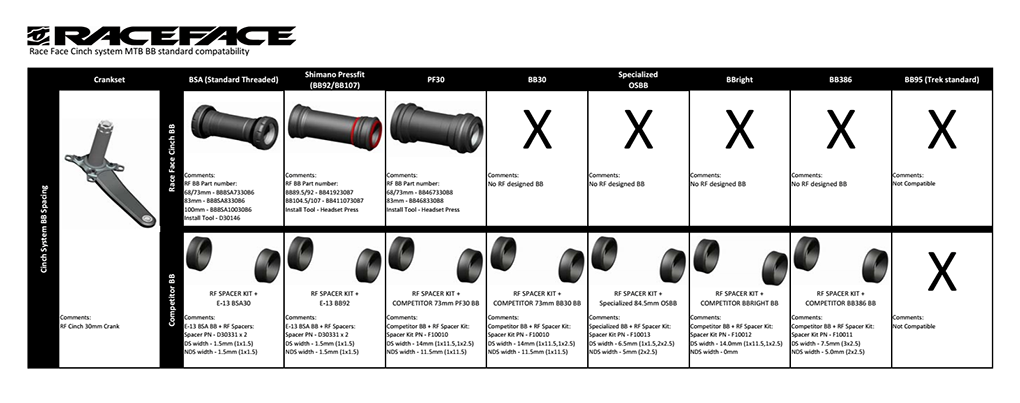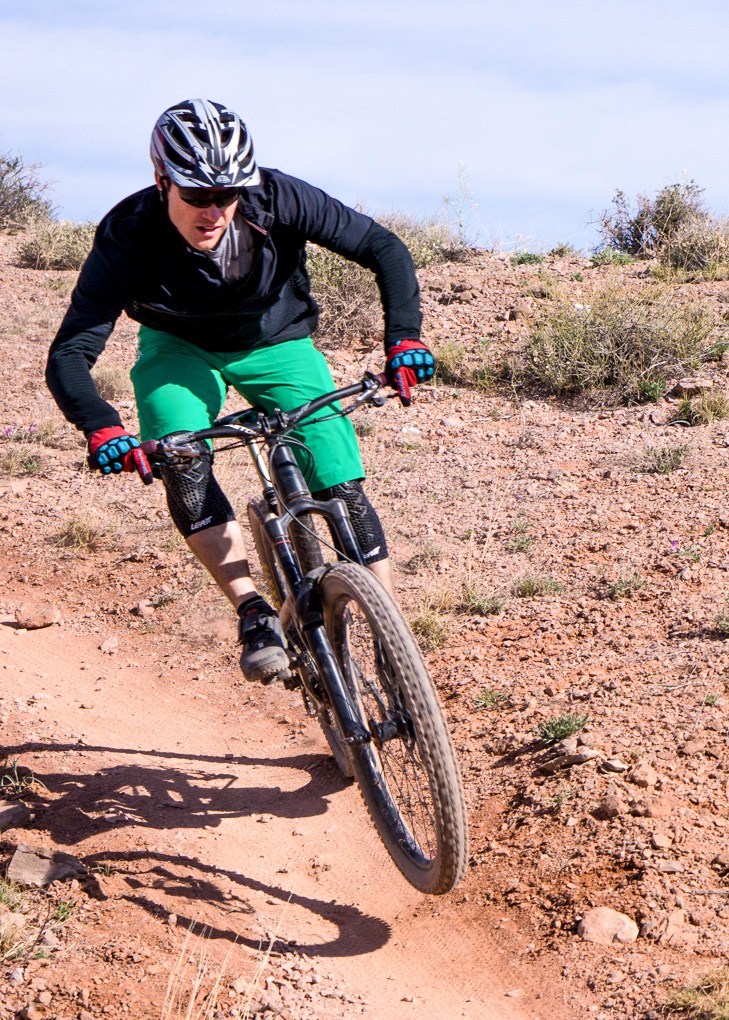
Race Face Next SL Crankset
Configuration tested: 175mm, 68/73mm BSA BB, 28T Spiderless ring
Reviewer: 5’8” 160 lbs
Locations Tested: Park City, UT, Moab, UT
Days Ridden: 30
Measured Weight: 534 grams
MSRP: $499.99
Race Face claims that their Next SL cranks are “the lightest production carbon crankset on the planet,” and I haven’t found anything to refute that.
Race Face is one of the few companies that designs, tests, and manufactures carbon fiber composite parts in North America (Canada to be precise), and in addition to being light, the Next SL cranks are touted as being stiff, and offering a wide range of configurations.
We wanted to see if the Next SL cranks were as light as they’re said to be, and to then see if their stiffness and durability were as impressive.
Weight
Before putting the Race Face Next SL cranks on my bike, I weighed them and was happy to see that they came in at 534 grams, which included spacers, bottom bracket, 28T chainring, and protective boots for the crank arm ends (see table).
Race Face lists their bottom brackets as weighing 87g and the cranks as weighing 425g with a 28T chainring. That comes to 512g, leaving 22g for the rubber boots and bottom bracket spacers.
The boots only weigh 16g and the spacers average out to ~10g, so the cranks are slightly heavier than listed, but not by very much. Importantly, they are still significantly lighter than the competition.
Setup
I then went to install the cranks, and I was delighted to find that they came with a great set of instructions. They stood out as being simple, easy to follow, and useful. I’d love to see other manufacturers follow suit.

Note: Step 3 – Hand Press: Hand pressing the crank arms together does not work quite as smoothly as I expected. The splined interface is very precise and that meant that it took quite a lot of fiddling and wiggling to get the two sides to seat together. I found that I had the best luck hand pressing while simultaneously spinning the drive side crank bolt to get it to catch. Otherwise there was a tendency for the crank arm to not quite seat fully.
Step 8 – Ensure There Is No Play: My favorite method for checking for crank arm play is to grab the crank arm with my palm and the downtube of the bike with my fingertips and pull the two together. That gives me a fairly stable reference point that makes it easy to tell if the crank arm is loose.
The chainline and Q-factor for the Next SL cranks are closely in line with SRAM and Shimano offerings, so you won’t feel a difference in pedal position, and you will be able to maintain the same chainline for shifting performance.

The Cinch chainring mounting system is slick. It allows the user to swap spiderless chainrings or spiders with an old splined bottom bracket tool. The only catch is that the drive side crank arm must be removed before swapping spiders or spiderless rings. Fortunately that is quick and easy to do. Race Face makes 3X, 2X, and 2X w/ bash ring spider configurations, in addition to spiderless chainrings, so you should be able to find an option that meets your needs.
Additionally, the spindle is removable and can be replaced with a longer one which permits the use of these cranks on fat bikes, and means that the cranks won’t become obsolete the next time the industry decides to change bottom bracket standards.
Finally, Race Face makes a range of bottom brackets compatible with almost any bottom bracket standard.

The Ride
I spend most of my time riding on 170mm Shimano M980 XTR cranks. They have stood out to me as having a great strength-to-weight ratio. They are light, but still one of the stiffer cranksets I’ve used.
The Next SL are lighter and just as stiff. My first thought was: “Wow, if these hold up, their only downside will be price.”
As it turns out, they have held up very well. My concerns about using carbon cranks (given my tendency to hit my cranks on rocks) have been allayed.
Race Face includes rubber booties for the ends of the crank arms, and plastic stickers to protect the sides. As long as you replace the stickers, shoe rub is a non-issue. The booties do a good job of protecting against crank strikes, but do decrease clearance a little, and catch a bit harder on rocks. The increased grabbiness was never problematic, but was noticeable. There is potential to strike the sides of the cranks on rocks, but that was rare, and the finish on the cranks seems to be tough enough to keep them from showing too much wear.
Given the durability they’ve shown and the vast array of bottom bracket and spindle options, I could see myself carrying the Next SL between many bikes into the future.

Utah isn’t the best place to test bottom brackets since we don’t frequently get the muddy conditions that can decimate bearings. But I have gotten out on some wetter days, and so far, the bottom bracket has held up nicely.
The replacement cost of the bottom bracket alone is pretty average at around $47, so it won’t hurt financially any more than it would with XTR or XX1 cranks when it comes time to replace the bottom bracket.
While using the Next SL crankset, I did find one downside: the chainring isn’t exceptional. It does feature alternating narrow and wide tooth profiles, but the teeth are quite tapered when viewed from the side, and they are not very tall. I found myself losing my chain somewhat regularly when riding hard through rough terrain.
I’ve used the Sram XX1 chainrings, Wolftooth Drop-Stop rings, and the Chromag Sequence rings that use the licensed SRAM tooth geometry. All of those options feature tall, square teeth, and they all held the chain significantly better than the Race Face ring. I started to run a top guide with the Race Face ring and that solved my problems, but that is weight I don’t have to add with the other rings. The good news is that Wolftooth now offers a CINCH compatible direct mount ring, so you aren’t limited to the Race Face ring.
Bottom Line
The Next SL cranks are an outstanding option for a lightweight and stiff crankset. If you are looking for a high-end crankset, I wouldn’t hesitate to recommend them, but I would suggest changing the stock chainring out for an aftermarket version, or running a top guide.

I’m surprised you dropped the chain so often. I ran the 28T, KMC chain, 11-36 XT cassette, and XT clutch rear mech for over a year with no problems (fast, bumpy, rocky) on a Yeti SB-66. The only times I ever dropped a chain (twice) was on multiple 1-2′ drops in a row, and only if I had forgotten to switch the clutch on.
What was your full set up — cassette, chain, etc?
Mike,
I was running it with an XT M771 11-36 cassette and XT CN-HG95 Chain (both new). The clutch on my XTR M986, GS cage rear derailleur is set pretty stiff too. This is the second Race Face narrow/wide ring I’ve run, the first being a standard 4-bolt, 32T version. I found I was losing chains on both.
The chain has only come off in really rough terrain where features like multiple 1-2′ drops abound. I wouldn’t have been disappointed in the performance of this ring if I hadn’t also ridden the Wolftooth Drop-Stop and Chromag Sequence rings. The only time I’ve dropped chains with those rings is when the ring and/or the chain is worn out. Most riders won’t have an issue with the Race Face ring, but I didn’t feel that it was equal to some of the other options out there.